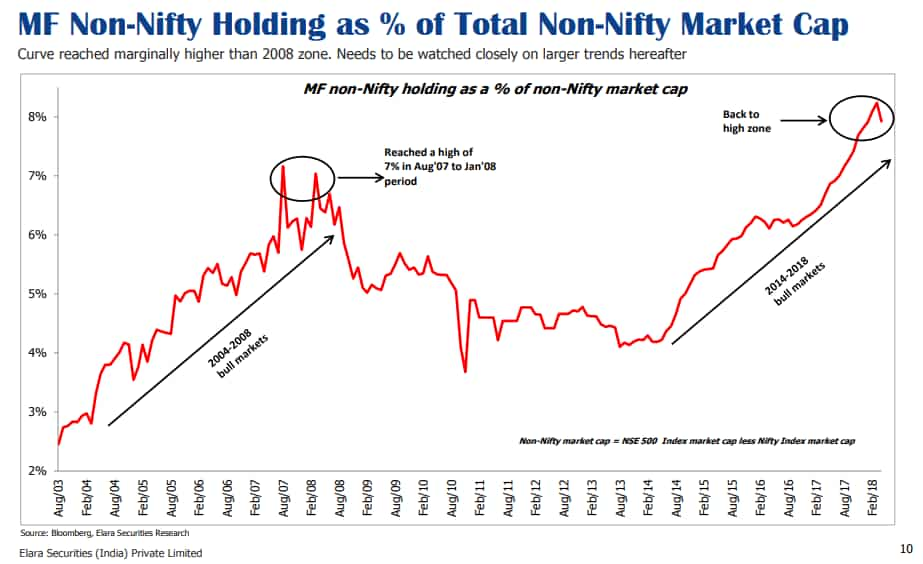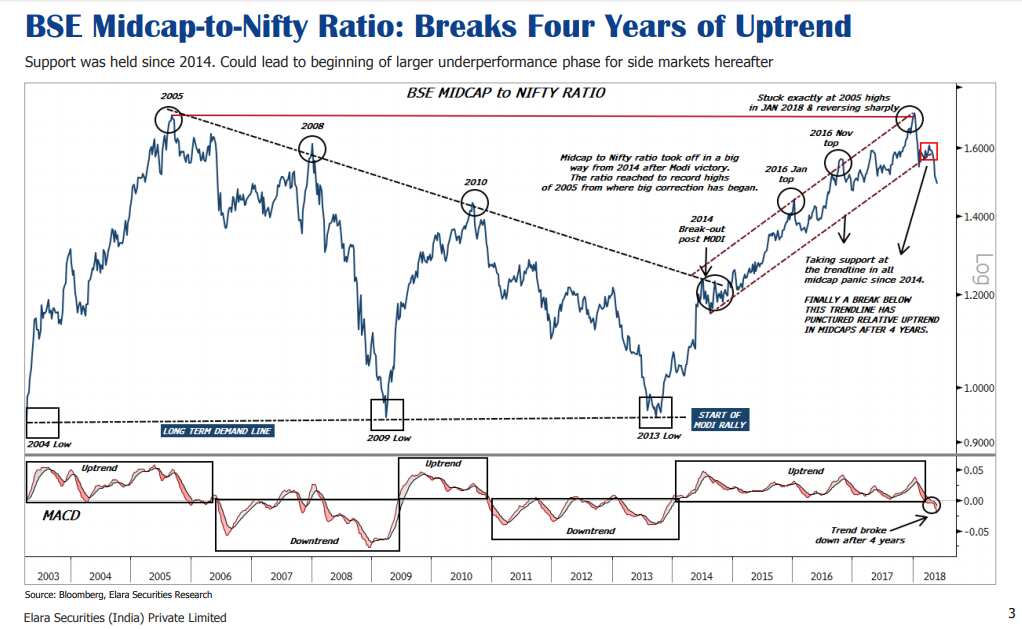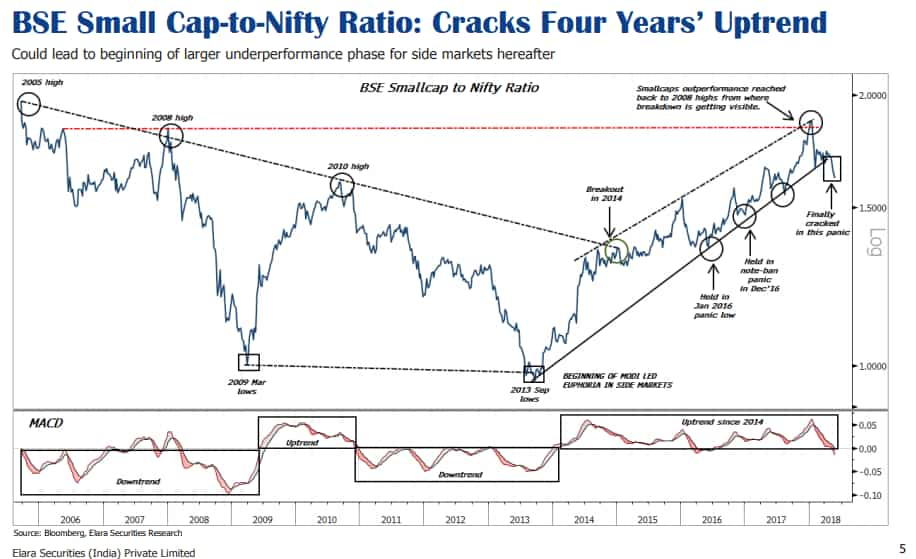4 years of Narendra Modi govt: Sensex, Nifty outperforms global markets
In Modi’s leadership from 2014 to till date, Indian markets have made some history. Investors appetite for equities increased continuously with IPO market witnessing boom, midcap and smallcap indices soaring to new level.

The NDA government is celebrating four years of rule in India, as their leader Narendra Modi was sworn as Prime Minister of the country on May 26, 2014. Modi led the BJP's campaign in the 2014 general election, which led to the party bagging a massive majority in the Lok Sabha. Thereafter, PM Modi in his four year reign has introduced various schemes that affected virtually each aspect of the citizens' life, from toilets, affordable housing to delivery of subsidies in new form. Not to forget, he also launched a drive against black money through his demonetisation move and also brought the country under the umbrella of Goods and Services Tax (GST) regime.
Modi on 4th anniversary of his reign on Saturday said, “ On this day in 2014, we began our journey of working towards India’s transformation.” He added, “Over the last four years, development has become a vibrant mass movement, with every citizen feeling involved in India's growth trajectory. 125 crore Indians are taking India to great heights!”
He added, “I bow to my fellow citizens for their unwavering faith in our Government. This support and affection is the biggest source of motivation and strength for the entire Government. We will continue to serve the people of India with the same vigour and dedication.”
In Modi’s leadership from 2014 to till date, Indian markets have made some history. Investors appetite for equities increased continuously with IPO market witnessing boom, midcap and smallcap indices soaring to new level.
When Modi’s BJP party won in the month of May 2014, Indian market welcomed the new government with open arms and happiness reflected in the performance of Sensex and Nifty 50.
On May 02, 2014, the benchmark Sensex was trading at 22,403.89 level, and within 24 days this index surged by 2,312.99 points or 10.32% and reached to 24,716.88 mark on May 26, 2014, when Modi sworn as PM.
Same was the case of Nifty 50, this index stayed at 6,689.50 level on May 02, 2014, jumped to nearly 815 points or 12.18% in 24 days and crossed over 7,500-mark.
Since May 26, 2014 to till date, Sensex has soared by a massive 11,727.10 points or 47.45% and clocked an all-time high of 36,443.98. Even Nifty 50 showed a promising growth by surging nearly 3,668 points or 48.87% and witnessing high of 11,171.55-level.
By end of April 2018, India’s share in the world market cap is at 2.8% (up 10bp YoY). Over the last 12 months, world market cap has increased by 13.2% (USD9.5t), while India’s market cap is up 16.5%.
In April 2018, Nifty bounced back strongly and returned 6.2% which is highest monthly gain in 24 months. The benchmark slipped by 4.9% in February and 3.6% in March.
As for Sensex, the index has grown by 7% in April month, which is way higher compared to global markets. Globally, UK (+6%), Japan (+5%), Korea (+3%), Russia (+2%) and Brazil (+1%) were the key global markets to close in the green in local currency terms. On the other hand, Indonesia (-3%), China (-3%) and Taiwan (-2%) were among the worst performers.
Sunil Jain analysts at Elara Capital on 4-years of Modi says, “The round of Bull market in midcaps started post 2014 (Modi euphoria). Since then, we saw massive inflows into local MF portfolios. Most funds were diverted into mid and small caps based on lack of large cap options.”

Jain added, “MF built a big tail in side markets in the past few years, which accelerated after the note ban. We have seen evidence to suggest that the big crowd got sucked into the markets post demonetization.”
According to Elara, One key trend here is the midcaps relative pattern. Post 2014, midcap-to-Nifty ratio broke out of a decade cycle downtrend on the back of midcap chasing. The ratio has been following this uptrend for the past four years.
“We saw two large setbacks in midcaps over 2016-17, but this trendline has held well. In this leg, we have seen a big reversal in the trend emerging after four years. In this round of market correction, relative performance of side market has already reached a two-year low, ” Jain added.

Since 2014, midcaps have seen three large round of corrections during January 2016, November 2016 and May 2017). In all three rounds, the retracement in Midcap-to-Nifty ratio from the highs in the range of 6-8%. However, in this round, midcaps have already retraced 14% from top, puncturing the Bull cycle.
2014-15 was a large cap market, 2015-16 was mid cap market and 2016-17 was small cap market. Jain added, “One full cycle of shift into smaller names seems to have been played by the markets for now.”

In terms of sector-wise performance, Elara highlighted, we had seen such breakdowns in the Metals-to-Nifty ratio in 2014, Pharma-to-Nifty ratio in 2016 and breakouts in Auto-to-Nifty ratio in 2014 & now IT-to-Nifty ratio in 2018. All of these have transformed into medium-term trends.
Notably, in what is going to hold India in good stead globally, under his leadership, the country jumped to 100th rank in the 2018 Ease of Doing Business ranking by World Bank.
Considering the above factor, one can definitely applaud Modi’s reign in Indian markets as they have definitely become a money making indexes for investors.
Get Latest Business News, Stock Market Updates and Videos; Check your tax outgo through Income Tax Calculator and save money through our Personal Finance coverage. Check Business Breaking News Live on Zee Business Twitter and Facebook. Subscribe on YouTube.
RECOMMENDED STORIES

EPFO Pension Schemes: Early pension, retirement pension, nominee pension and 4 other pension schemes that every private sector employee should know

Tata Motors, Muthoot Finance and 3 more: Axis Direct recommends buying these stocks for 2 weeks; check targets, stop losses
04:33 PM IST











 PM-Vidyalaxmi scheme a step towards Yuva Shakti empowerment: PM Modi
PM-Vidyalaxmi scheme a step towards Yuva Shakti empowerment: PM Modi Gujarat CM to unveil Rs 5 billion worth of projects during his Vadodara visit
Gujarat CM to unveil Rs 5 billion worth of projects during his Vadodara visit PM Modi to visit Varanasi on October 20 to lay foundation stone for 23 projects worth Rs 1300
PM Modi to visit Varanasi on October 20 to lay foundation stone for 23 projects worth Rs 1300 PM Modi to visit Jamshedpur on September 15
PM Modi to visit Jamshedpur on September 15 PM Modi reaches Delhi after concluding Singapore, Brunei visit
PM Modi reaches Delhi after concluding Singapore, Brunei visit